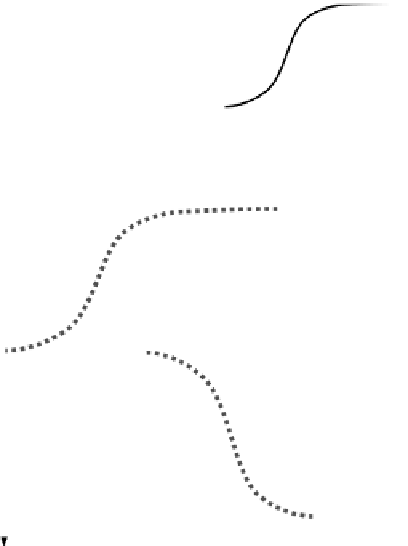Information Technology Reference
In-Depth Information
Fig. 10.2
Wundt curve as
applied by Berlyne. Redrawn
from Berlyne (
1971
)
The Wundt and effective complexity curves both peak in the middle suggesting that
positive hedonic response may be proportional to effective complexity. Effective
complexity has, in a sense, the balance of order and disorder “built in.” One might
hypothesise that the most important and challenging survival transactions for hu-
mans have to do with other living things and especially fellow humans. Perhaps
that created evolutionary pressure leading to the optimisation of the human nervous
system for effective complexity, and human aesthetics and related neurological re-
ward/aversion systems reflect that optimisation.
10.3.2.3 Martindale—Prototypicality and Neural Networks
Colin Martindale was an active empiricist and in 1990 he published a series of ar-
ticles documenting experiments intended to verify the arousal potential model of
Berlyne. Martindale et al. (
1990
) notes:
Berlyne...developed an influential theory that has dominated the field of experimental aes-
thetics for the past several decades. . . Berlyne is often cited in an uncritical manner. That
is, he is taken as having set forth a theory based upon well-established facts rather than, as
he actually did, as having proposed tentative hypotheses in need of further testing. The re-
sult has been a stifling of research on basic questions concerning preference, because these
questions are considered to have been already answered. In this article, we report a series
of experiments that test obvious predictions drawn from Berlyne's theory. It was in the firm












